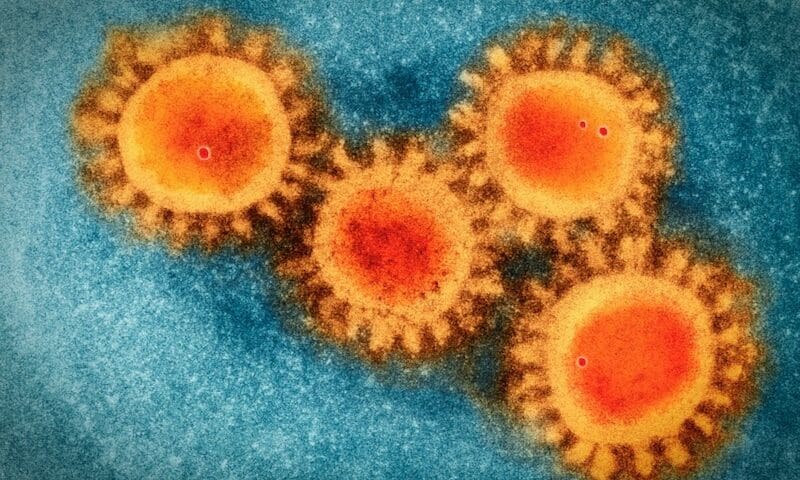Sars-CoV-2, the novel coronavirus behind the COVID-19 pandemic, infects a person by first binding its spike protein to the ACE2 receptor on the surface of human cells. Blocking this process could theoretically inhibit infections when tissues are exposed to the virus.
A research team led by the University of Illinois, Urbana-Champaign, suggests that a variant of the receptor—one with an even stronger ability to bind to the coronavirus—might work as a therapeutic candidate against COVID-19 by acting as a decoy to lure the virus away.
In a new study published in Science, the team showed that one soluble receptor protein dubbed sACE2.v2.4, a variant with three mutations, was significantly more efficacious at neutralizing SARS-CoV-2 infection than was the unmodified protein in cultured cells.
Scientists have already isolated many highly potent neutralizing antibodies from patients who recovered from COVID-19. These antibodies defend a cell from infection by directly blocking the pathogen’s biological activities. They are considered a viable COVID-19 treatment approach, and inducing them is a key goal of vaccines.
But the novel coronavirus’ spike protein can quickly accumulate “escape mutations” that help it evade the antibodies. Regeneron is combining two monoclonal antibodies targeting different sites on the spike protein in hopes of reducing the risk of resistance.
A soluble high-affinity ACE2 variant could offer one advantage in the resistance wars: To escape neutralization, the virus would have to mutate in a way that decreases its ability to bind with human cells’ native ACE2 receptors. And that, in turn, would make it less infectious, Erik Procko, the study’s senior author, explained in a statement.
ACE2 is widely expressed in the body—including in the lungs—regulating blood pressure, blood volume and inflammation. “Administering a decoy based on ACE2 might not only neutralize infection, but may have the additional benefit of rescuing lost ACE2 activity and directly treating aspects of COVID-19,” Procko said.
Because human ACE2 is not naturally designed to recognize Sars-CoV-2, Procko’s team hypothesized that mutations could be introduced to increase affinity.
The researchers examined 2,340 ACE2 mutations and settled on a combination of three mutations that made the receptor bind to the virus 50 times more strongly—a level comparable to the monoclonal antibodies against COVID-19 that have been identified so far. The decoy receptor not only bound to the virus in live cell cultures, but also effectively neutralized it, the team reported.
Using decoys to prevent COVID-19 from binding to healthy cells is also an approach pursued by scientists at Rensselaer Polytechnic Institute. An RPI team recently found that the widely used blood thinner heparin, by binding tightly to Sars-CoV-2, acts as a potential decoy to trap the virus.
With the promising results in lab dishes, Procko and colleagues are testing whether their decoy receptor is safe and stable in mice. They hope to show efficacy in animals before moving into a clinical trial, he said.
In addition, the team is exploring whether the drug candidate binds to other coronaviruses as a potential treatment for future pathogens. As sACE2.v2.4 was also found to potently neutralize Sars-CoV-1, the virus behind a deadly outbreak in Asia around 2003, “it is possible that that the decoy receptor will neutralize diverse ACE2-utilizing coronaviruses that have yet to cross over to humans,” the researchers wrote in the study.

